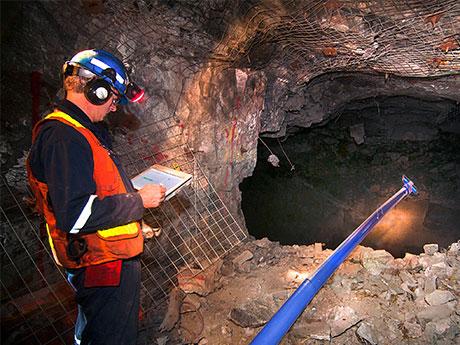When is down hole deviation drilling done?
May/22/2024 22:03:30

Down hole deviation drilling is a special technique used in various industries for specific purposes. By understanding how to use this method, you can optimize your drilling operations and ensure a successful end result. Let's look at the conditions under which down hole deviation drilling is usually done.
Geotechnical Surveys and Surveys
Geotechnical surveys often use downhole deviation drilling to gather subsurface information. By drilling at an angle, geotechnical engineers obtain information about soil and rock at different depths. This information is important in evaluating soil stability and suitability for construction projects such as buildings, bridges and highways.
Mineral Exploration and Mining
Blast hole is commonly used in mineral exploration and mining. By drilling at an angle, geologists access ore bodies underground. This technology enables more precise targeting of mineral deposits, reducing the need for large-scale drilling and exploration. Down hole Deviation drilling is particularly useful in situations where mineralization occurs at depth or in complex geological conditions.
Oil and Gas Recovery
In the oil and gas industry, down hole deviation drilling are used for a variety of purposes. It is used to access oil and gas reservoirs below the surface of the earth. By drilling at an angle, engineers can reach reservoirs that are otherwise inaccessible with vertical drilling techniques. This method increases the efficiency of oil and gas recovery and maximizes production.
Environmental Remediation
Down hole deviation drilling is also used in environmental remediation projects. If there are contaminants below the surface, such as groundwater or soil, it may be necessary to drill at an angle to reach the affected area. Down hole Deviation drilling allows the installation of remedial systems, such as groundwater drainage wells or soil vapor extraction systems, to mitigate environmental impacts.
Horizontal drilling
Horizontal drilling, a type of downward drilling, is commonly used in various industries. In situations where traditional vertical drilling is not possible or practical, horizontal drilling allows resources to be recovered or infrastructure to be installed horizontally. This technology is used, among other things, in oil and gas production, drilling wells and installing underground facilities.
Directional drilling
Directional drilling is another form of down hole deviation drilling that is widely used in the construction and electrical industries. By drilling at an angle or bending the drill bit, engineers can install infrastructure such as pipes, cables or ducts underground without disturbing the surface. Directional drilling minimizes environmental impacts and reduces disturbance to existing buildings and landscapes.
Wellbore Stability
In some drilling operations, wellbore deviation is used to improve wellbore stability. By drilling at an angle, engineers can mitigate problems such as wellbore collapse or instability. This technology helps maintain the integrity of the borehole and ensures the safety and efficiency of drilling.
Improved reservoir drainage
Down hole deviation drilling can also be used to improve reservoir drainage in oil and gas production. By drilling horizontal or multi-spaced wells, engineers can access larger portions of the reservoir and increase fluid extraction efficiency. This technology maximizes reservoir recovery and extends the productive life of oil and gas fields.
Final Thoughts
Down hole Deviation drilling is a versatile technique that can be applied to many different fields and scenarios. Whether for geotechnical investigations, mineral exploration, environmental remediation or oil and gas extraction, this method offers several advantages. The angle of down hole deviation drilling can make a lot of difference in the underground mining. By drilling diagonally or horizontally, engineers can access underground resources, gather valuable information and mitigate environmental impacts. Understanding when to use down hole deviation drilling can optimize drilling operations and lead to successful results in a variety of fields.
Posted by Anonymous




